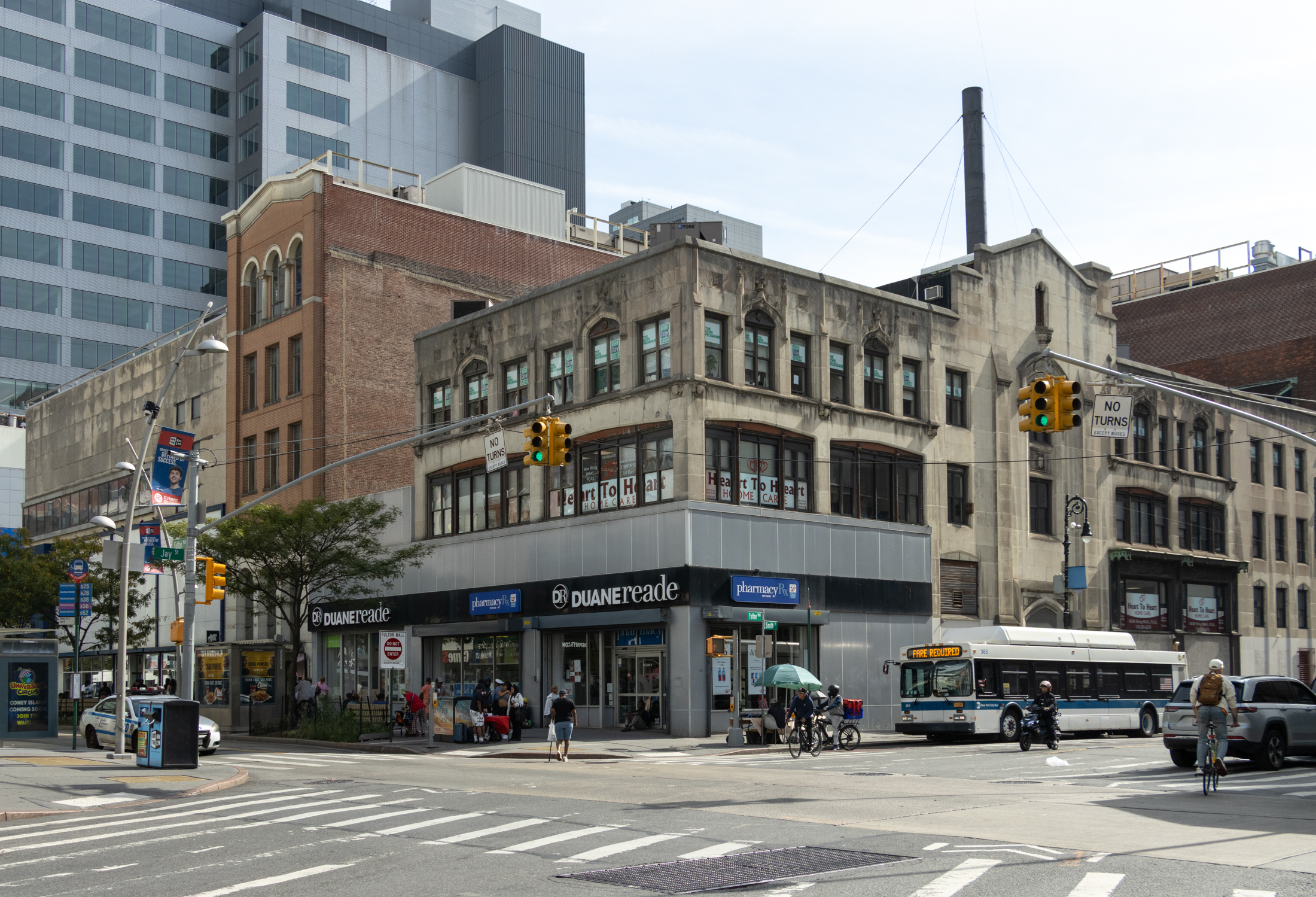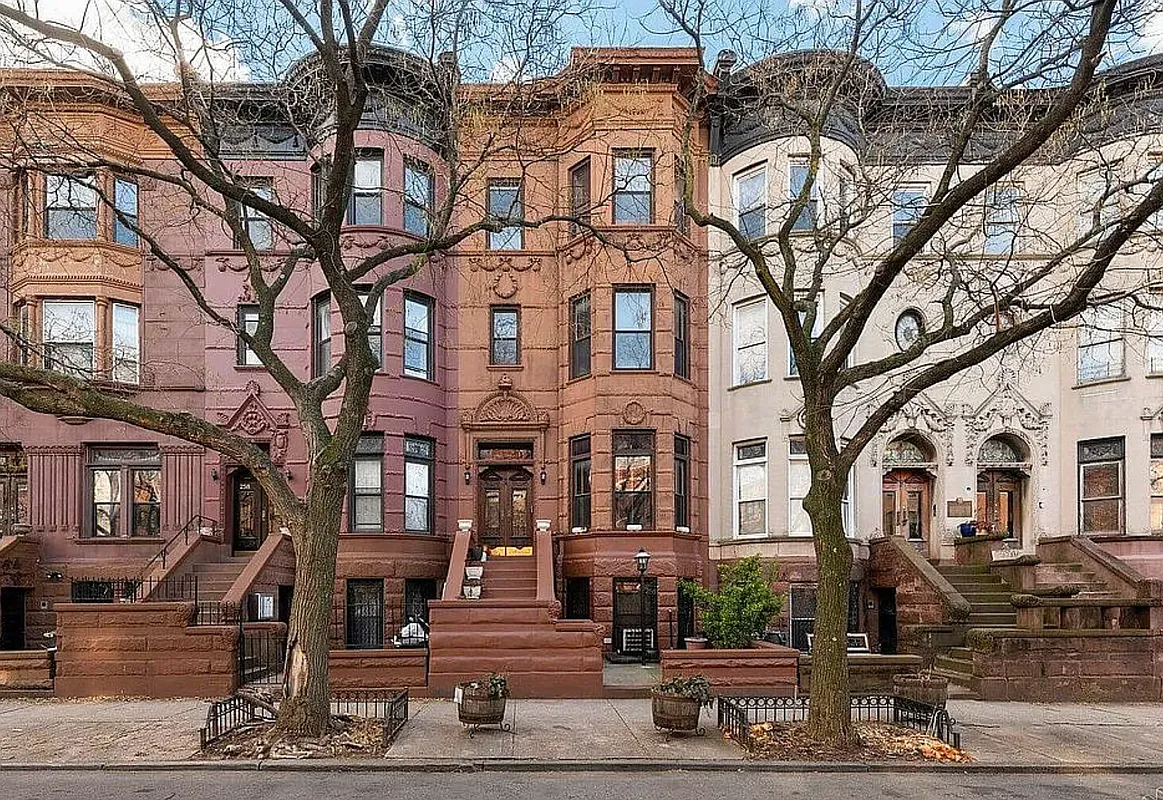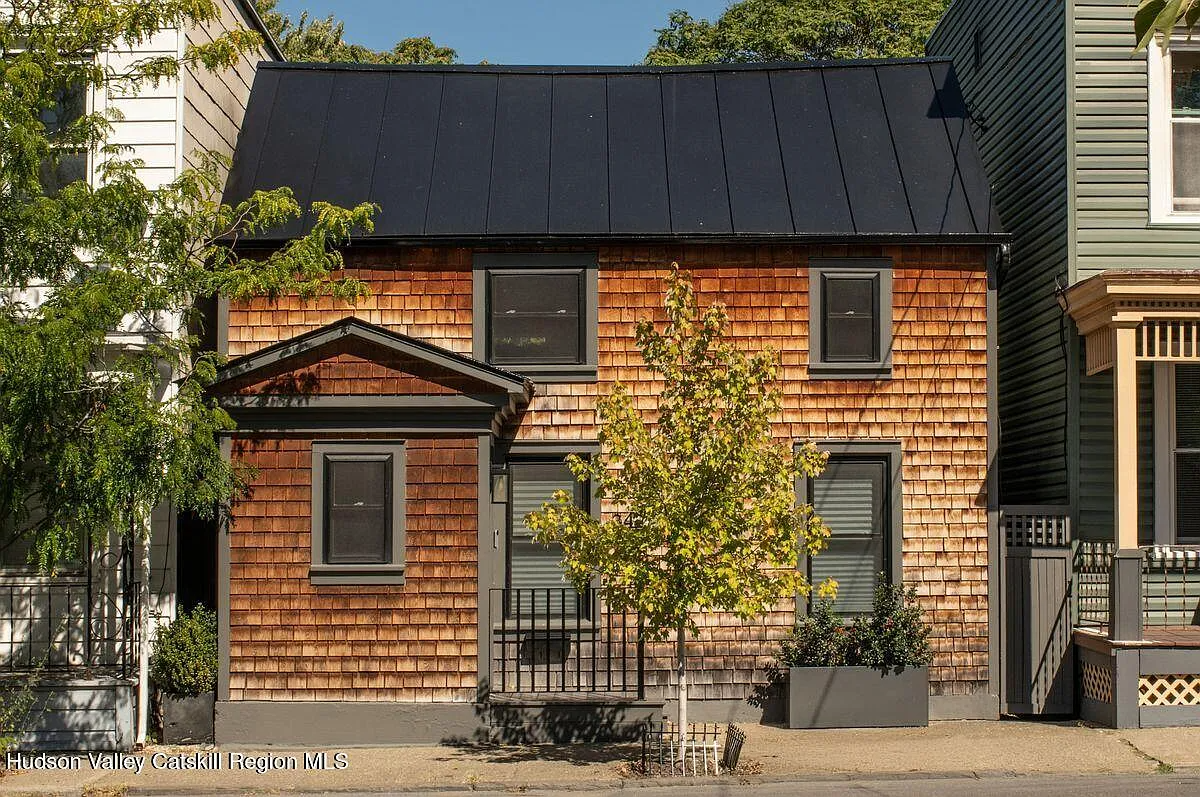Getting a Jump on the Q1 Post-Mortems
In a case of premature data ejaculation, appraisal firm HMS Associates has put out its first quarter numbers on the Brooklyn real estate market with the last two weeks of March still unreported. Nevertheless, the trends are obvious. Sales volume? Down. Average sales prices? Down too. For two years, sales volume has dropped, but prices…


In a case of premature data ejaculation, appraisal firm HMS Associates has put out its first quarter numbers on the Brooklyn real estate market with the last two weeks of March still unreported. Nevertheless, the trends are obvious. Sales volume? Down. Average sales prices? Down too. For two years, sales volume has dropped, but prices have not, said Sam Heskel, executive vice president of HMS. Now, as last, prices are falling into line with the reality of diminished sales volume. Volume between January 1 and March 15 of this year was off 35 percent from the first fourth quarter of last year; average sales prices around the borough fell 12 percent. Versus the first quarter of last year, volume was down 65 percent and prices were off 8 percent. But not all neighborhoods felt the pain equally; nor do their diverging performances conform to any kind of logic. According to HMS, prices were actually up in Greenpoint, Carroll Gardens, and Sunset Park while they dropped dramatically in Brooklyn Heights, Sheepshead Bay, and Fort Greene. Rather than showing much about any particular market, these results simply underscore the shortcomings of using average, rather than median, prices to get a snapshot of trends. In case you were worried they’d end on a negative note, Heskel comes through with a drum-beating quotation: If there is a silver lining at all, this is an excellent time to buy for those who are in a position to do so.
BROOKLYN HOME PRICES PROJECTED
TO DROP BY EIGHT PERCENT IN FIRST QUARTER OF 2009
Sales Volume Expected to Plummet 65%
from First Quarter 2008, according to HMS Associates Report
New York, March 30, 2009….Brooklyn home sales are on track to continue their downward spiral in the first quarter of 2009, according to the latest report prepared by real estate appraisal firm HMS Associates.
HMS studied 15 neighborhoods between January 1, 2009 and March 15, 2009. The firm found that the average home price fell by eight percent from $641,464 in the first quarter of 2008 to $589,135 in the period between January 1, 2009 and March 15, 2009. The total number of sales dropped 65% from 1004 in the first quarter of 2008 to 347 between January 1, 2009 and March 15, 2009.
These are not full quarter numbers, cautioned Sam Heskel, executive vice president of HMS. There is a percentage of sales out there that must still be recorded. However we suspect that the trend will not change much over the remaining two weeks.
On a consecutive quarter basis, the average home price dropped 12% and sales volume fell 34.7% between the fourth quarter of 2008 and the period between January 1, 2009 and March 15, 2009, HMS said.
For two years, sales volume has dropped, but prices have not, said Heskel. Now, as last, prices are falling into line with the reality of diminished sales volume.
The average home price figures come from HMS’s comprehensive quarterly study of 15 representative neighborhoods in Brooklyn and include one-, two-, three-, and four-family homes, condos, and co-ops. The report includes neighborhoods that show both price increases and decreases and are deemed together a fair reflection of what is happening in Brooklyn as a whole, according to Heskel.
While the average price borough wide dropped eight percent so far this year, there were significant variations in different neighborhoods. Prices rose by double digits in Greenpoint, Carroll Gardens, and Sunset Park but fell by steep margins 24 to 38 percent — in Brooklyn Heights, Sheepshead Bay, and Fort Greene. The number of homes sold fell in all 15 neighborhoods, with the biggest drops in Williamsburg, Carroll Gardens, Boerum Hill/Cobble Hill, Clinton Hill, Fort Greene, and Bay Ridge.
Because the volume of sales has dropped off so greatly it is difficult in some neighborhoods to get an accurate assessment of what is going on in the quarter, Heskel said. In some instances you have a huge price increase, but based on only one or two sales, so the increase is skewed. It’s more useful to look at broader trends, which show price gradually declining along with the slowdown in sales volume.
The picture was much bleaker in some neighborhoods not included in the study, such as Bedford-Stuyvesant, East New York, Bushwick, and Brownsville. Foreclosures were still a problem in the four neighborhoods of 58 Brooklyn foreclosures listed in the first quarter by PropertyShark, 30 were in these four areas. Heskel also noted that the level of foreclosures works out to one foreclosure for every six homes sold in Brooklyn.
Here again, says Heskel, the trend that has been developing is still in play. The Brooklyn neighborhoods that are least able to weather an economic downturn are getting hit hardest.
If there is a silver lining at all, this is an excellent time to buy for those who are in a position to do so, said Heskel. We are seeing more people taking advantage of these historical low rates and prices throughout the metropolitan area.
About HMS Associates
HMS Associates is a full-service Brooklyn-based residential and commercial appraisal firm. Founded by Sam Heskel in 1998, the firm serves all of New York City
and its surrounding areas. Heskel, an associate member of The Appraisal Institute, is state certified in New York and New Jersey and is a member of The National Association of REALTORS®.
The firm is FHA-approved, and Heskel is a member of Multiple Listing Services for Brooklyn and Long Island (includes Queens), Putnam and Westchester counties, and the Greater Hudson Valley.





It’s pretty clear DIBS is living where he wants to live because he likes the area, and the house is easy on his wallet What’s not to like about that?
I see the bottom in real estate coming soon — foreclosure prices in Bushwick, Bed Stuy, East New York, etc. are in the 300s and inventory is clearing out.
Meanwhile, prices in Carroll Gardens (what about Park Slope???) and other areas still *increasing.*
I would say that prices will stay flat for a while and Miss Muffet, BHO, Hannible, Corner et al will not get their big bargains.
However, true economic collapse and inflation could be looming around the corner because our government is deep in debt and printing money. I don’t know what will happen then. Maybe the looting in the streets The What desires. Maybe the rich will move to Switzerland and leave us Carroll Gardens. (Kidding.)
Check out the excellent — and really scary — article in The Atlantic by a former exec at the IMF about how our country is just like a corrupt banana republic and in just as much trouble.
Also check out the NYT article The What pasted about banks screwing up everything by not taking care of its houses and then leaving the already screwed-over owners to pick up the pieces.
We’re living in dramatic times.
Dave,
As a hedge fund guy with multiple properties, if YOU can’t afford to buy a house outright in one of the more prime areas of Brooklyn, who can these days…?
I’m not saying that to be snarky, but you clearly make a good living and I don’t see you stepping up to buy one of these nice 2 and 3 million dollar properties on the market…
Where’s the Case-Killa thread? New numbers out today.
Yeah baby!!!
***Bid half off peak comps***
“‘If there is a silver lining at all, this is an excellent time to buy for those who are in a position to do so.'”
Speaking of premature ejaculation…
***Bid half off peak comps***
they sure do dibs…. I just don’t get it. It’s like waiting for the terminator to die in “terminator”. I mean, who has 2.5MM to just plunk down right now? everyone’s seen their total assets get cut in half… anyone even near the financial industry wouldn’t sign up for a big mortgage even if they could get one….but still it happens. there sure is a lot of money in this city.
Hey, Dave –I have enough cash on hand to buy a brownstone outright, so I’m not sure why you insist on pretending I’m a stock boy at Target. But the panic is really palpable in your posting voice. Sorry the data is going against you.
Contrary to DIBS’s version of “Econ 101”, no economic theory suggests that a decline in sales volume due to sellers asking bubble prices will lead to prices “strengthening”.
The end game in bubbles is a pop. We aren’t there yet.
Real estate prices reach equilibrium when investors — not homeowners — are indifferent between buying to hold-and-rent or selling to homeowners (rental values equal ownership price). Brooklyn prices are still far above anything a rational buy-and-hold rental investor would be willing to pay. Even if rents don’t drop further — which seems highly unlikely — sales prices need to drop 1/3 to 1/2 in most neighborhoods to reach equilibrium. (More in Brooklyn Heights if yesterday’s house of the day reflects the current sale market.)
But bubbles don’t often end at equilibrium. The manic going up is replaced by depressive going down. Prices typically drop until buy-and-hold rental investors see screaming buys, so dramatic that they are willing to take the risk of still more price drops.
And this bubble is likely to be worse than average for Brooklyn. On top of the usual debt-fueled speculation and speculation-fueled faith that prices will always go up that characterizes every bubble, we had an enormous growth in Wall Street related money that is now going into reverse.
Wall Street/finance firms accounted for less than 10% of corporate profits a decade ago and 40% at the peak. Our crony capitalists will fight hard for government welfare to keep on going, but in the end even the US Treasury won’t be big enough to fund them. Wall Street is going to shrink back to 10% or, if the politicians can buck their masters before we are all pulled into a major collapse, even less.
And so NY real estate needs to adjust not only to the collapse of the real estate bubble, but also to the collapse of the industry that supplied whatever real money and real demand underpinned it. That’s why rents are dropping — real demand is dropping even as real supply keeps increasing (due to new construction, conversions from stabilization to market, renovations, expansions of the areas middle class people will live in, etc).
Demand is down. Supply is up. Inventory has doubled in Manhattan, but the shadow inventory is up far more. Tax collection is dropping and will drop far more next year as bonuses dry up and the real estate transfer tax fades away — so the City is going to have to cut services and, therefore, quality of life. Salaries and rents are dropping as the highest-paid sectors shrink, in the case of Wall St perhaps for a long time. Construction costs will drop as the economy slows. Case-Shiller, out today, shows NY metro area one-families accelerating in price decline and still wildly too high. All the trend lines are heading in the same direction with no inflection points visible.
Expect further price declines. Expect declines to make further declines more likely. Don’t expect any reversal of direction in NYC until it is clear what form the financial industries will take after recovery and whether the new institutions will be in NY.
Expect a bottom at rational pricing: when you can buy a house for cash, rent it out, and earn significantly more from rents (after deducting all costs, including your own labor and real maintenance/repair costs, and assuming that the price of land remains stable) than the bank expects to make on a mortgage where it — not the government — is taking the risk of default (look at the rates they charge for unsecuritized jumbos, not the rate for FNMA loans). The homeowner’s risk is higher than the bank’s and homeowners aren’t going to be bailed out, so in rational markets, homeowners should earn more than the bank. If that price is higher than the cost of renovation, new construction or evicting rent stabilized tenants, assume that the market will stabilize at the lowest number (and that land prices will drop as much as necessary).
But don’t count on rational pricing: there is no guarantee prices won’t go lower still, especially if investors are worried about future rent decreases, slower subways, Wall Street’s short-termers overpowering Washington, or other investors losing heart.
they sure do dibs…. I just don’t get it. It’s like waiting for the terminator to die in “terminator”. I mean, who has 2.5MM to just plunk down right now? everyone’s seen their total assets get cut in half… anyone even near the financial industry wouldn’t sign up for a big mortgage even if they could get one….but still it happens. there sure is a lot of money in this city.